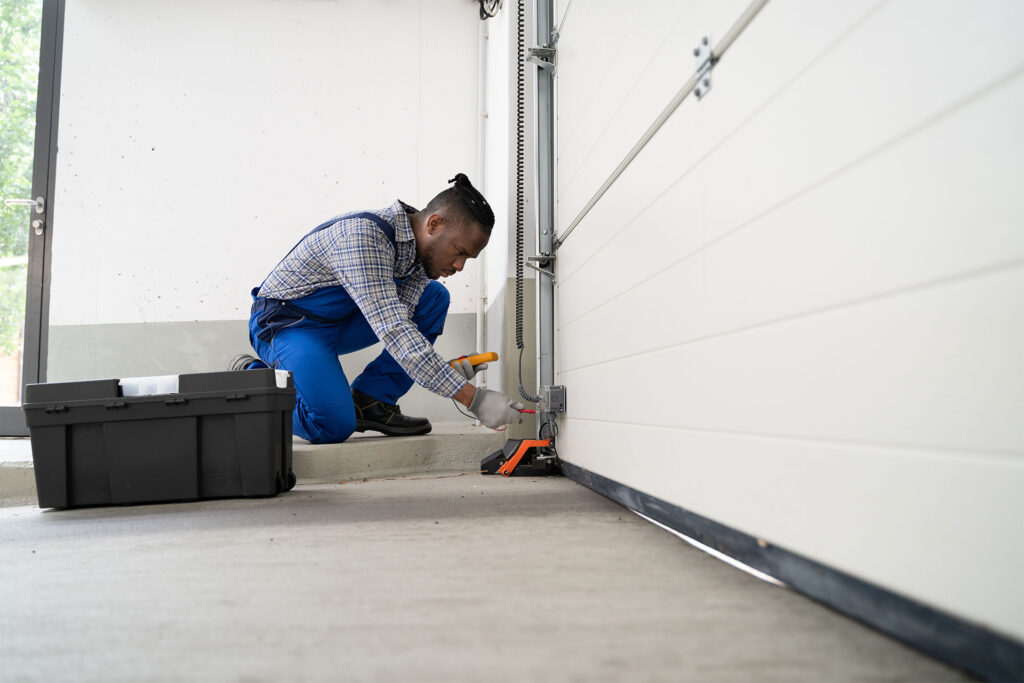The Essential Guide to Garage Door Repair: Tips and Tricks
by siteadmin

Garage doors are often the unsung heroes of our homes, quietly doing their job day in and day out until something goes wrong. Whether it’s a malfunctioning opener, a broken spring, or a dented panel, dealing with garage door repairs can be a frustrating experience. However, with the right knowledge and approach, tackling these issues can be more manageable than you might think. In this guide, we’ll cover the essentials of garage door repair, offering tips and tricks to help you troubleshoot common problems and keep your garage door operating smoothly.
Understanding Common Issues:
Before diving into repair solutions, it’s important to understand some common issues that may arise with garage doors:
- Malfunctioning Opener: If your garage door isn’t responding to the remote or wall switch, the opener might be the culprit. Check for power supply issues, damaged wiring, or worn-out components.
- Broken Springs: Springs play a crucial role in counterbalancing the weight of the garage door. If you notice a broken spring or hear loud noises when opening or closing the door, it’s likely time for a replacement.
- Misaligned Tracks: Over time, the tracks that guide the garage door may become misaligned, causing the door to operate unevenly or get stuck. Inspect the tracks for debris buildup and ensure they are properly aligned.
- Worn Rollers: Rollers that are worn or damaged can cause the garage door to operate noisily or get stuck during operation. Regular lubrication and inspection can help prevent roller issues.
- Dented Panels: Minor dents and dings in garage door panels can usually be repaired with DIY methods or professional assistance. However, extensive damage may require panel replacement.
DIY vs. Professional Repair:
While some garage door repairs can be tackled as DIY projects, others are best left to trained professionals. Here’s a general guideline:
- DIY: Routine maintenance tasks such as lubricating moving parts, tightening hardware, and replacing batteries in remote controls can typically be done by homeowners with basic tools and knowledge.
- Professional: Complex issues such as broken springs, malfunctioning openers, and major structural damage should be handled by experienced technicians. Attempting these repairs without proper training and equipment can lead to further damage or personal injury.
Preventive Maintenance Tips:
Regular maintenance is key to preventing costly garage door repairs. Here are some tips to keep your garage door in top condition:
- Lubricate Moving Parts: Apply a silicone-based lubricant to rollers, hinges, springs, and tracks to reduce friction and prolong the lifespan of these components.
- Inspect and Tighten Hardware: Periodically inspect nuts, bolts, and screws on the garage door and opener to ensure they are tight and secure.
- Test Safety Features: Test the auto-reverse mechanism and photoelectric sensors regularly to ensure they are functioning correctly and keeping your family safe.
- Keep Tracks Clean: Clean the tracks with a damp cloth to remove dirt, debris, and obstructions that could affect the smooth operation of the garage door.
Garage door repair doesn’t have to be daunting. By familiarizing yourself with common issues, knowing when to DIY and when to call in the pros, and staying on top of preventive maintenance, you can keep your garage door operating smoothly for years to come. Whether it’s a simple adjustment or a major overhaul, addressing garage door issues promptly can save you time, money, and frustration in the long run.
Garage doors are often the unsung heroes of our homes, quietly doing their job day in and day out until something goes wrong. Whether it’s a malfunctioning opener, a broken spring, or a dented panel, dealing with garage door repairs can be a frustrating experience. However, with the right knowledge and approach, tackling these issues…
Recent Posts
- JCTZ Garage Doors: Your Trusted Garage Door Repair Service in Avondale, Buckeye, and Palm Valley, AZ
- Garage Builders Seattle: Crafting Dream Garages That Stand the Test of Time
- Seamlessly Connected: The Integration of Garage Doors with Home Automation Systems
- Securing Your Home: Exploring Technological Advancements in Garage Door Security
- Elevate Your Home’s Style with Customization Options for Garage Door Design by Garage Doors
